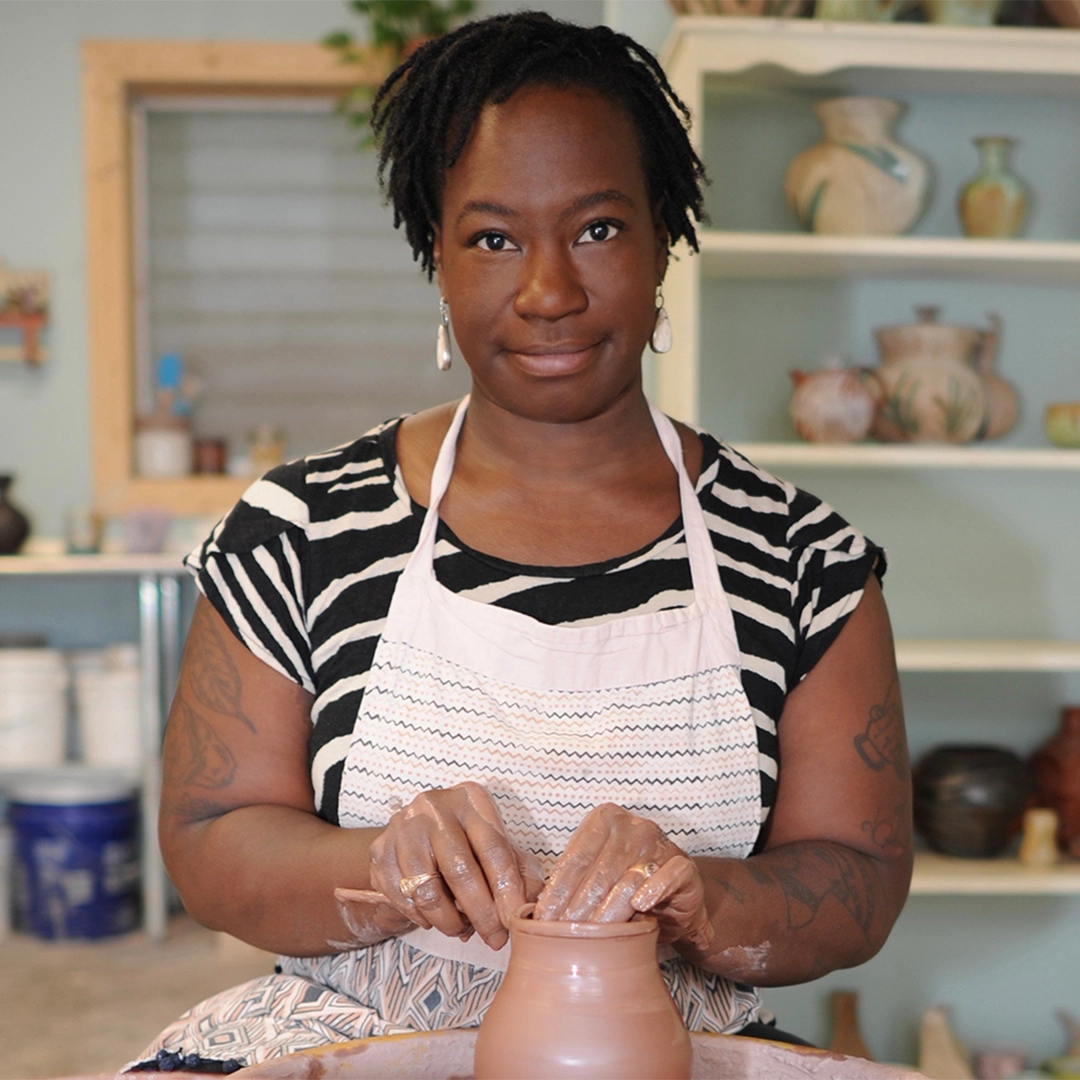by The Editors | August 1, 2022
When the Artist Becomes the Muse at Rollins Museum of Art
The Winter Park museum’s exhibit "Subject: Artist" puts artists’ vulnerability on display.

It seems that artists see the world through a different lens than most. They find inspiration in every subway ride, waiting room and streetscape. It’s a gift that allows them to look at the world around them and channel it into a poignant painting, capture it in a candid photograph or sketch out social commentary.
But while artists are adept at finding inspiration in the world around them, turning the focus of the lens or brush or pen on themselves poses a particular challenge. Even Vincent Van Gogh struggled with being the subject of his own work.
“People say—and I’m quite willing to believe it—that it’s difficult to know oneself, but it’s not easy to paint oneself either.”
—Vincent Van Gogh
Some makers choose to be the subject of their own work, not out of vanity, but necessity. Van Gogh often painted himself when he was just a fledgling artist because it was cheaper than hiring a model. Others become the muse without even knowing, captured candidly by a fellow artist. Regardless of the story behind the scenes, these works are particularly revealing, giving us a glimpse into how these creatives view themselves and their peers.
Now through September 4, visitors to the Rollins Museum of Art in Winter Park can snoop inside the minds of some of the art sphere’s most brilliant creators in the exhibit Subject: Artist. Viewers can peruse 34 works from the museum’s permanent collection, all of which feature artists in self-portraits, candid captures or formal photographic portraiture ranging from the 19th to the 21st centuries.
“You get to see the different facets of these artists, how they want to be perceived and how they want to be represented,” said Dr. Gisela Carbonell, curator of the Rollins Museum of Art.
One of her favorite pieces in the gallery—and one that’s emblematic of the collection as a whole—sits right in the center of the hall. There, in a small brown frame, hangs a self-portrait of Raphael Soyer. The Russian-born artist specialized in the ordinary, often painting portraits of the working class and the unemployed during the Great Depression. In this image, Soyer turns his keen eye for mood on himself.

“That’s one of my favorites in the exhibition because it’s an image that is very true to the way in which Soyer saw himself at that stage in his life,” Carbonell said. “It’s a very beautiful, modest, rich and truthful portrait.
The painting shows Soyer dressed smartly in a tie and jacket, his white hair peeking out from underneath a black fedora. Tired eyes look out behind his oval-shaped glasses. Soyer painted the portrait in 1980, a mere 7 years before he died of cancer.
Some of the pieces in this exhibit are a type of love letter from one artist to another. In Edgar Degas’ painting Mary Cassatt at the Louvre, viewers see a snapshot of the French impressionist’s artistic friendship with American impressionist Mary Cassatt. The duo would often visit the Louvre together with Cassatt’s sister in search of inspiration for their own pursuits. Eventually, the visit itself became Degas’ inspiration.
“I like that one a lot because it shows artists going to museums looking at the work of other artists for study and for inspiration,” Carbonell said.
If viewers look beyond the frames, they also might notice a meaning behind the placement of each piece. You won’t find any plaques or posters indicating it, but Carbonell grouped the artworks by sub-themes throughout the gallery. On one wall, you might notice a collection of paintings where artists are celebrating another maker they admire, on another you’ll find a grouping where the artists are depicting a loved one in their life. As you make your way from one side of the gallery to the other, you’ll start to see these sub-themes emerge, Carbonell says.
Test your perception of portraiture at the exhibit through September 4. Admission to the museum is always free, and if you aren’t in the area, log onto rollins.edu/rma to take a virtual tour of Subject: Artist.





